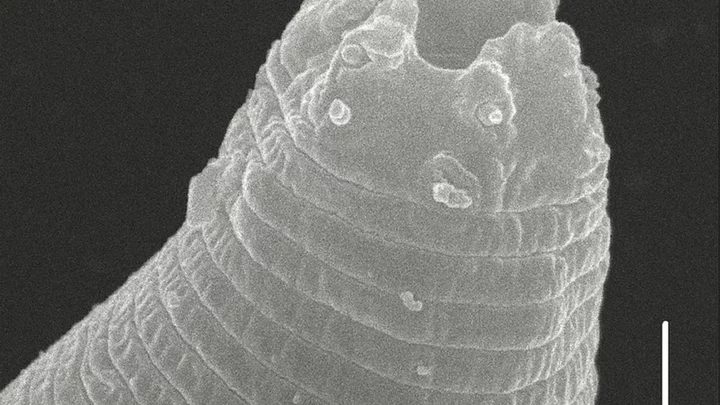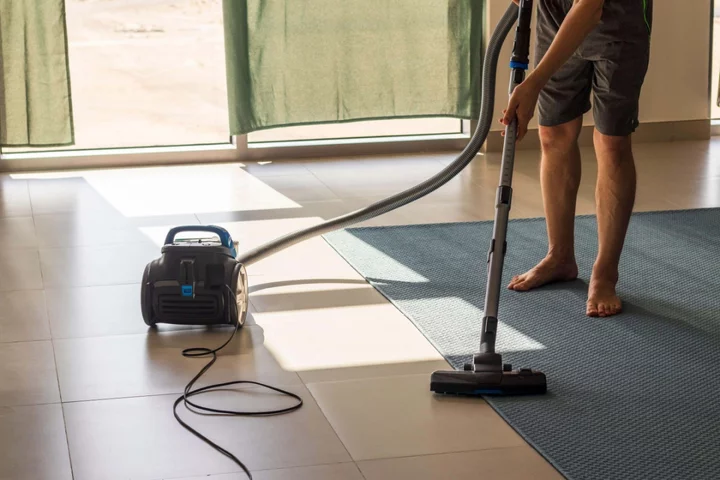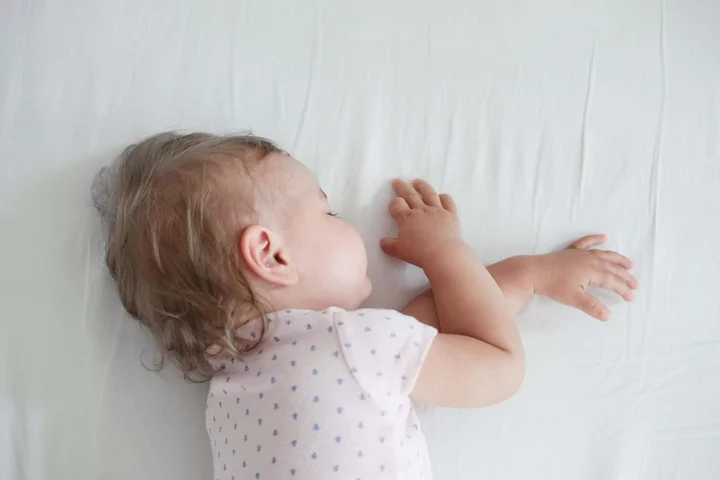
In Horto: Hearty, outdoorsy fare in a secret London Bridge garden
Walking into In Horto feels like walking into someone’s garden after the green thumbed designers of Your Garden Made Perfect have had their way with it. Stylish yet homely, with thought put into making every corner feel like you’re stepping into someone’s al fresco dinner party – hexagonal red brick flooring, rattan lamp shades and roof, wooden dining tables and chairs, as well as rustic dishes and serving plates. Potted plants welcome you at the entrance and vines twirl around the edges of the restaurant, which gives it an even more cloistered feeling. Just a five minute walk from London Bridge, right next to Flat Iron Square, In Horto has a distinctly different vibe to its packed surroundings. There’s the Borough Market crowd, where inching behind tourists is only made worth it if you procure a sausage roll from the Ginger Pig (mmm, dreamy); while Flat Iron Square boasts a hipper, boozier clientele. In Horto offers a bit of an oasis from both – a quieter, calmer place to sit down and have a meal. In Horto is a venture by TVG Hospitality, also known as The Venue Group, which boasts Mumford and Sons member Ben Lovett as one of its backers. The group also operates Flat Iron Square, which it moved from its original location on the corner of Southwark Bridge Road and Union Street to its current home last year. So it makes sense that the company is trying to develop the area by providing more restaurants with different concepts – it also opened Carrubo next to In Horto, a Mediterranean-inspired “light bites” place. The clue to why the restaurant feels so much like a garden party is in the name; In Horto in Latin is “in the garden”. The cooking on display here is very much focused on outdoorsy, wood-fired cooking, with a beautiful large domed oven taking pride of place behind the counter. Almost every dish is baked, roasted or grilled in this hard-working piece of equipment, bar things like the charcuterie board or the burrata and caponata, but even that has a touch of fire with the addition of smoked white balsamic dressing. In Horto’s menu moves with the seasons, but some things that are a staple and absolutely worth having again and again. The confit potato chips, which have been described as an “uncanny” dupe of Quality Chop House’s own version, are very, very good – layers of nearly paper thin potatoes layered and cooked in a thick wedge, before being portioned into chunky batons and roasted so that they caramelise and crisp up on the outside, but retain a delicious softness on the inside. The heritage beetroot with vegan feta and sunflower and pumpkin seeds also went down a treat, with the earthy, gorgeously red and purple root vegetables allowed to shine. We were big fans of the ’nduja butter and burnt onion butter that can be ordered and slathered with relish on bread. Also enjoyed were tenderly shredded venison batons ensconced in crispy crumbs, and while I generally find padron peppers to be a bit… well, boring, In Horto’s were covered in a healthy sprinkling of Aleppo salt that gave the soft, slightly charred vegetables that much-needed crunch. The mains were hearty and great for sharing, although perhaps less exciting than the starters and sides. There’s only so many roasted vegetables you can eat before it starts to taste a little monotonous. Having said that, the slow roasted braised lamb was a triumph; tender and juicy, with a delicious amount of fat that melts on the tongue. The real joy of In Horto’s menu is that it is all made to be shared, which I love. There is something so comforting and communal about passing dishes to one another, making sure everyone tries a little bit of everything. After all that food, it’d make sense that there was little room for dessert. Except I’m nothing if not determined. We had to be sensible though – the tarte tatin with vanilla ice cream sounded bloody lovely, but would have been far too much and we would have had to be rolled home. Being the balanced and rational eaters we are, we opted to share the rich, luxurious chocolate mousse with honeycomb and salted caramel ice cream. Unwise? Perhaps, just a little. But I have no regrets. In Horto, 53b Southwark St, London, SE1 1RU | inhorto.co.uk | 020 3179 2909 Read More The Union Rye, review: Finally, a decent restaurant in this charming East Sussex town Forest Side: Heavenly Cumbrian produce elevated to Michelin-starred proportions I tried the food at Idris Elba’s restaurant – he should stick to wine
1970-01-01 08:00

The two best exercises for lowering blood pressure, according to study
Exercises such as “wall sits” could be the best form of activity to help people reduce blood pressure, a new study suggests. Other physical activity including cardio, resistance training and HIIT workouts are also good for bringing down resting blood pressure levels, researchers found. But isometric exercises – those that involve engaging muscles without movement, such as wall sits and planks – provide the best results, they said. The study, published in the British Journal of Sports Medicine, saw researchers conduct analysis on previous studies looking at exercise and blood pressure. Some 270 studies were included in the final analysis which contained data on almost 16,000 people. They examined the impact different exercises had on systolic blood pressure, which notes the force at which the heart pumps blood around the body; and diastolic blood pressure, the resistance to the blood flow in the blood vessels between heartbeats when blood is pumped around the heart. The researchers, led by academics at Canterbury Christ Church University in Kent, found that there were significant reductions in resting blood pressure following cardio (aerobic exercise); dynamic resistance training, such as squats, press-ups and weights; high intensity interval training (HIIT); and combined training and HIIT. But the largest reductions were seen after isometric exercise training. A secondary analysis on specific types of exercises found the most benefit was seen among those who performed “isometric wall squats” and among runners. The academics said that current exercise recommendations for the prevention and treatment of high blood pressure are based on “older data” and suggest that it may be time to review the current guidelines. “Aerobic exercise training, dynamic resistance training, combined training, high-intensity interval training and isometric exercise training are all significantly effective in reducing resting systolic and diastolic blood pressure,” they wrote. “Overall, isometric exercise training is the most effective mode in reducing both systolic and diastolic blood pressure. “These findings provide a comprehensive data driven framework to support the development of new exercise guideline recommendations for the prevention and treatment of arterial hypertension.” For the average adult high blood pressure is considered to be from 140/90mmHg. When a person’s blood pressure is too high it puts extra strain on blood vessels, heart and other organs, such as the brain, kidneys and eyes. Persistent high blood pressure can lead to a number of serious health problems including heart attacks, strokes and vascular dementia. While there are medications which can help, people can make a number of life-style changes to help bring their blood pressure down including regular exercise, losing weight, cutting back on caffeine, alcohol and salt. Read More Dating app screenshot culture is out of control Husband fired from family business after wife roleplayed with reborn dolls The bowel cancer symptom George Alagiah wished he’d caught earlier Charity boss speaks out over ‘traumatic’ encounter with royal aide Ukraine war’s heaviest fight rages in east - follow live
1970-01-01 08:00

Iain Hughes: Charity swimmer confirmed dead as body found
The body of Iain Hughes, who went missing in the English Channel, was found in waters near Belgium.
1970-01-01 08:00

Algeria media guide
An overview of the media in Algeria, as well as links to broadcasters and newspapers.
1970-01-01 08:00

Experts resurrect parasite after 46,000 years in Siberian permafrost
Scientists have resurrected a parasite which has been dormant in the frozen permafrost of Siberia for 46,000 years. The microscopic creatures were first uncovered as part of a remarkable discovery back in 2018. At the time, researchers led by Anastasia Shatilovich found two of the worms in sub-zero temperatures in the soil. At first, it was previously thought that the creatures could stay in their slumber for just 40 years. However, it was later revealed that they could stay inactive for tens of thousands of years. Sign up to our free Indy100 weekly newsletter The creatures tend to shut down their systems when they are in unfavourable conditions. This means they won’t move or reproduce, and their metabolism stops. Carbon analysis has revealed that the worms – also known as nematodes – came from a prehistoric era. The developments could change the way experts approach bringing back other extinct species, too. During an analysis, the research team discovered the worms were Panagrolaimus kolymaensis - a species that was previously thought to be extinct. The scientists wrote in their paper: “Previously, we had shown that nematodes from the Siberian permafrost with morphologies consistent with the genera Panagrolaimus and Plectus could be reanimated thousands of years after they had been frozen. “Several viable nematode individuals were found in two of the more than 300 studied samples of permafrost deposits spanning different ages and genesis.” It’s not the only thing that scientists have recovered from permafrost, either. It was announced earlier this year that scientists are busy working on reviving 'zombie viruses’ that have been lying dormant for tens of thousands of years in Arctic conditions, and while it sounds absolutely terrifying, it could be important when it comes to protecting us all in the future. Have your say in our news democracy. Click the upvote icon at the top of the page to help raise this article through the indy100 rankings.
1970-01-01 08:00

Duran Duran want Andy Taylor benefit gig to help global fight against cancer: ‘It”s the right thing to do!’
After Andy Taylor last year revealed he is battling the disease, Duran Duran want their benefit concert for the guitarist to help in the global fight against cancer.
1970-01-01 08:00

DraftKings NFL Promo: Bet $5 on the Hall of Fame Game, Win $150 Today!
The NFL Preseason is right around the corner and you can get the good times rolling TODAY thanks to DraftKings Sportsbook.NFL fans who sign up with DraftKings and bet their first $5 or more on the Jets vs. Browns Hall of Fame Game will win $150 in bonus bets INSTANTLY upon placing that bet!&...
1970-01-01 08:00

Experts reveal the most unhygienic things in your kitchen – and how to get them clean
It’s likely there are countless things in your kitchen which look clean, but actually, they’re filthy. Could your dishcloths be making you sick? When was the last time you washed your tea towels? And do we really need to bleach the sink more than once a month? We asked an expert to find out. Knobs, door handles, and buttons The buttons and dials on your kitchen appliances could be a germ-fest. “People often neglect to clean these areas of the kitchen,” says Danielle Mason, a cleaning content creator – or ‘cleanfluencer’ – who creates tutorials and videos on TikTok and Instagram. “Most of the time, they don’t think it is important, but as you’re commonly handling raw meat and food, it’s extremely important to keep these areas clean, due to cross-contamination. “Always sanitise with a cloth – I like to do this with Zoflora, as it leaves a great smell afterwards, and kills bacteria from dirty fingers.” Cloths If what you clean with isn’t clean, chances are, your kitchen isn’t either. “I always leave my cloth to soak in bleach before going to bed every night,” says Mason. “This enables a new start in the morning with no bacteria. Also, make sure you’re replacing the cloths – I would suggest a new one every two weeks, whilst still bleaching every night. And make sure you’re not using this cloth on anything other than the kitchen, as you do not want to cross-contaminate.” Sponges Mason stresses sponges are unhygienic, as they’re constantly damp and can carry E. coli. “People tend not to use sponges, as they carry so many more germs, and even putting them in the microwave will not kill all of them. Avoid a sponge where possible.” Dish towels Dish towels and tea towels may not be changed anywhere near often enough. “You should have one for every day of the week, as they carry so many bacteria and germs, which get spread across the kitchen. If you’re drying pots and pans, and then wiping down your surfaces, it’s not good,” she says. Chopping boards Chopping boards – particularly wooden ones – could be a haven for bacteria. “You should have a different colour for different types of food, one for meat, fruit, and other foods,” advises Mason. “The best way to clean them is in a dishwasher, as it’s good to get rid of all the germs due to the very high heat. If you don’t like the dishwasher, then boil the kettle water and leave the chopping boards to soak in it. I use a steam cleaner on mine, as it kills 99.9% bacteria and there are no chemicals.” It is best to avoid wooden chopping boards altogether, as these cleaning methods may damage them. Kitchen sink “This is a massive breeder of bacteria and grime; a distinct microbiome is found in sinks. “The plumbing area found beneath sinks revealed microbial communities dominated by a group of bacteria called Proteobacteria. This phylum includes pathogens such as Salmonella and E. coli, which can cause serious disease,” Mason shares. “I’ve always been taught never to wash my hands in the sink, and to never throw dirty water down the sink. You wash your cups and plates in the sink and prepare food, so it should always be kept clean, and nothing from outside the kitchen should cross-contaminate that. For example, never wash your floors and put dirty water in your kitchen sink, always throw it down the toilet.” How do you possibly clean the inside of your sink and drains? “Baking soda and vinegar is the best way to clean your sink out, or bleach, but you must be careful with bleach, as it can stay in the bottom of your sink, depending on the material it’s made of. I clean my sink out every day.” Pipes and cupboards around your sink could be leading you to have a rodent problem. “You can prevent mice and rodents from entering the kitchen by covering any small crevices or cracks. It is also important to repair leaks as soon as they happen, as they can come through the pipes,” she says. Fridges “Deep clean [your fridge] every two months. A normal cleaning – the wiping of shelves – should be done every other day with soapy water. For any bad smells, use baking soda, which will absorb the smell from the fridge,” Mason continues. “The fridge is a breeding ground for salmonella, E. Coli and other bacteria.” Bins Where you throw your waste away could be a breeding ground for germs. “Make sure you keep [outdoor] rubbish bins away from your house, and make sure you empty your bin as soon as it’s full,” advises Mason. “I personally do not keep a bin in the kitchen, I use a bag and I take that out by the end of the day, but if you are using a bin, make sure you bleach it with hot kettle water, to keep it smelling fresh.” Read More This is why you keep waking up at 4am – and what you can do about it TV chef James Martin reveals cancer diagnosis in apology over ‘bullying’ allegations Bursts of activity that make you huff and puff ‘linked to reduced cancer risk’ Charity boss speaks out over ‘traumatic’ encounter with royal aide Ukraine war’s heaviest fight rages in east - follow live
1970-01-01 08:00

AIB makes a pre-tax profit of €987m
Its UK division, which includes its NI business, had a pre-tax profit of £119m, up £53m since 2022.
1970-01-01 08:00

Former Elon Musk colleague reveals Twitter boss ‘seems quite lonely’
It’s lonely at the top – just ask Elon Musk’s former colleagues. The Twitter owner tells the same jokes and anecdotes “over and over” and “seems quite alone,” according to a former senior executive at the company. Esther Crawford, who went viral last year after being pictured sleeping on the floor of Twitter’s office while trying to meet a tough deadline set by Musk, shared her thoughts in a post on the platform which was recently renamed X. Sign up to our free Indy100 weekly newsletter Crawford joined Twitter when it bought her startup in 2020, well before the billionaire took over the social media platform in a $44bn deal last year. The former head of product development, who was sacked in February as part of a round of 200 layoffs, said: “Elon is oddly charming and he's genuinely funny. He also has personality quirks like telling the same stories and jokes over and over. “The challenge is his personality and demeanour can turn on a dime going from excited to angry. “Since it was hard to read what mood he might be in and what his reaction would be to any given thing, people quickly became afraid of being called into meetings or having to share negative news with him.” She said Twitter employees feared being called into meetings with him or having to deliver bad news. “At times it felt like the inner circle was too zealous and fanatical in their unwavering support of everything he said.” “Product and business decisions were nearly always the result of him following his gut instinct, and he didn't seem compelled to seek out or rely on a lot of data or expertise to inform it. “I saw a person who seemed quite alone because his time and energy was so purely devoted to work.” Meanwhile, Musk appeared to put more faith in random feedback and Twitter polls than in his employees who were working to troubleshoot problems. She said: “His boldness, passion and storytelling is inspiring, but his lack of process and empathy is painful.” However, she didn’t pull any punches about the previous management either, calling it “bloated” and “soft and entitled” where “teams could spend months building a feature and then some last-minute kerfuffle meant it'd get killed for being too risky.” Musk recently killed off the iconic bluebird Twitter logo, replacing it with a white X. He has said he wants to create a super-app inspired by China’s WeChat which would offer messaging and payments as well as social media. That vision may be difficult to make a reality, after the collapse of the platform’s advertising business as marketers soured on Musk’s decision to fire thousands of employees and dial down its content moderation efforts. Have your say in our news democracy. Click the upvote icon at the top of the page to help raise this article through the indy100 rankings.
1970-01-01 08:00

Bursts of activity that make you huff and puff ‘linked to reduced cancer risk’
Short bursts of daily activity that make you huff and puff – such as playing high-energy games with children – could help reduce the risk of cancer, research suggests. According to the study, a total of just four-and-a-half minutes of vigorous activity – done in bursts of around one minute each – during daily tasks could reduce the overall risk of cancer by 18 per cent, and the risk of some cancers linked to physical activity by up to 32 per cent. Other activities could include vigorous housework, carrying heavy shopping around the supermarket, or bursts of power walking. Lead author Professor Emmanuel Stamatakis, of the Charles Perkins Centre, University of Sydney, Australia, said: “We know the majority of middle-aged people don’t regularly exercise, which puts them at increased cancer risk, but it’s only through the advent of wearable technology like activity trackers that we are able to look at the impact of short bursts of incidental physical activity done as part of daily living. “It’s quite remarkable to see that upping the intensity of daily tasks for as little as four to five minutes a day, done in short bursts of around one minute each, is linked to an overall reduction in cancer risk by up to 18 per cent, and up to 32 per cent for cancer types linked to physical activity.” Cancer types linked to physical activity are those where not exercising increases the risk of developing the disease. The cancers associated with physical activity included liver, lung, kidney, gastric cardia (a type of stomach cancer), endometrial, myeloid leukaemia, myeloma, colorectal, head and neck, bladder, breast and esophageal adenocarcinoma (cancer of the oesophagus). Published in Jama Oncology, the study used data from wearable devices to track the daily activity of more than 22,000 people who do not exercise. Researchers then followed the group’s clinical health records for close to seven years to monitor for cancer. They found that as few as four to five minutes of vigorous intermittent lifestyle physical activity (Vilpa) was associated with a substantially lower cancer risk compared with those who undertook no Vilpa. Vilpa was coined by researchers at the University of Sydney’s Charles Perkins Centre to describe the very short bursts of activity – around one minute each – we do with gusto each day. Vilpa is a bit like applying the principles of high-intensity interval training (HIIT) to your everyday life Professor Emmanuel Stamatakis, University of Sydney Prof Stamatakis said: “Vilpa is a bit like applying the principles of high-intensity interval training (HIIT) to your everyday life.” He added that adults who do not exercise are at increased risk of developing certain cancers such as breast, endometrial or colon. But, until recently, experts were not able to measure the impact of less structured forms of vigorous physical activity. In the study sample of 22,398 people with an average age of 62 who did not exercise in their leisure time, the researchers found 2,356 new cases of cancer (1,084 in physical activity-related cancer) over an average follow-up of 6.7 years. They found that a minimum of around 3.5 minutes of daily Vilpa was associated with up to an 18% reduction in cancer incidence, compared with no Vilpa, while 4.5 minutes of daily Vilpa was associated with up to a 32% reduction in the risk of cancers linked to physical activity. The researchers used data from the UK Biobank Accelerometry Sub Study and only included people who reported no leisure time exercise and no regular recreational walks. Read More TV chef James Martin reveals cancer diagnosis in apology over ‘bullying’ allegations Men have a problem – and it won’t be solved by either Andrew Tate or Caitlin Moran Husband fired from family business after wife roleplayed with reborn dolls
1970-01-01 08:00

Study uncovers what nap times reveal about young children’s brain development
Babies and toddlers who nap a lot may have smaller vocabularies and poorer memory and thinking skills, research suggests. Parents and guardians all over the world worry about their children getting either too little or too much sleep. But a new study reveals that some children are better at consolidating information during sleep, so they nap less frequently. Those with fewer words and poorer cognitive skills need to nap more frequently, the researchers found. Young children will naturally nap for as long as they need and they should be allowed to do just that Dr Teodora Gliga, University of East Anglia However, the findings suggest that reducing naps for these children will not improve brain development, and that they should be allowed to nap as frequently and for as long as they need. Lead researcher Dr Teodora Gliga, from the University of East Anglia (UEA), said: “There is a lot of parental anxiety around sleep. “Parents worry that their kids don’t nap as much as expected for their age – or nap too frequently and for too long. “But our research shows that how frequently a child naps reflects their individual cognitive need. “Some are more efficient at consolidating information during sleep, so they nap less frequently. “Children with smaller vocabularies or a lower score in a measure of executive function nap more frequently.” She added: “Young children will naturally nap for as long as they need and they should be allowed to do just that.” The research team studied 463 infants aged between eight months and three years during lockdown in 2020. What we found is that the structure of daytime sleep is an indicator of cognitive development Dr Teodora Gliga, University of East Anglia Parents were asked about their children’s sleep patterns, their ability to focus on a task, keep information in their memory, and the number of words that they understood and could say. They also asked parents about their socioeconomic status – including their postcode, income, and education – and about the amount of screen time and outdoor activities their child engaged in. Dr Gliga said: “Lockdown gave us an opportunity to study children’s intrinsic sleep needs because when children are in childcare, they rarely nap as much as they need to. “What we found is that the structure of daytime sleep is an indicator of cognitive development. “Infants with more frequent but shorter naps than expected for their age had smaller vocabularies, and worse cognitive function. “We also found that this negative association between vocabulary and frequency of naps was stronger in older children.” She added that although the majority of parents reported that lockdown did not impact their children’s sleep, parents from lower socioeconomic backgrounds were more likely to report a worsening in sleep. Caregivers should use a child’s mental age and not chronological age to ascertain a child’s sleep needs Dr Teodora Gliga, University of East Anglia “Screen time increased during lockdown and outdoor activities decreased but these did not explain differences in children’s sleep,” Dr Gliga said. She continued: “Our findings suggest that children have different sleep needs – some children may drop naps earlier because they don’t need them anymore. “Others may still need to nap past three years of age. “In the UK, preschools enrolling three to five-year-olds have no provisions for napping. “Caregivers should use a child’s mental age and not chronological age to ascertain a child’s sleep needs.” The study, published in the JCPP Advances journal, was led by UEA in collaboration with researchers at the University of Oxford, Oxford Brookes University, the University of Leeds and the University of Warwick. It was funded by the Economic and Social Research Council (ESRC). Read More Charity boss speaks out over ‘traumatic’ encounter with royal aide Ukraine war’s heaviest fight rages in east - follow live Bursts of activity that make you huff and puff ‘linked to reduced cancer risk’ New outfits in Highland dress collection help museum tell the story of modern tartan 5 expert-approved ways to stop your hair colour fading this summer
1970-01-01 08:00
